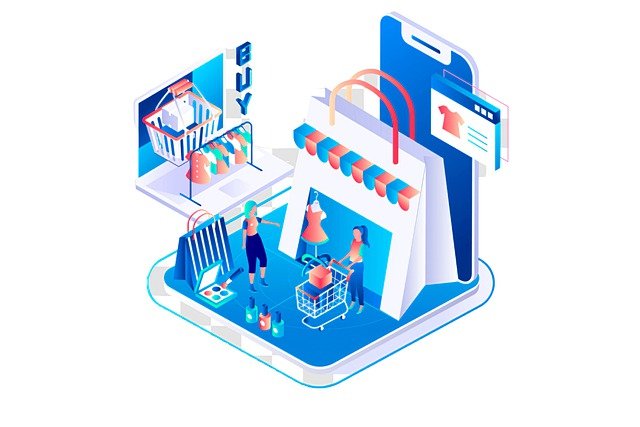E-commerce leads definition
Ecommerce leads are the people who are working at e-commerce companies and have shown interest in using your products/services.
Ecommerce leads are often the companies’ executives because they are eligible to make purchase decisions on their own or finalize the companies’ purchasing process.
When it comes to generating e-commerce leads, you should prioritize collecting and reaching out to e-commerce companies’ executives. That’s the safest bet for your time and effort.

Who needs e-commerce leads?
Any company will need to generate leads constantly. In order to secure more clients, companies will have to turn prospects into leads by educating and generating demand for their products/services.
Companies that need to produce e-commerce leads are often the following (but not limited to)
- Software companies that sell e-commerce solutions
- Accounting, bookkeeping services
- Legal services
- IT services
- Legal services
- More
Like other businesses, e-commerces will need to use or purchase many different things to maintain a smooth operation. Travel agencies may need e-commerce leads to sell travel tours as well.
Is it ok to buy e-commerce leads?
It’s ok to buy high-quality leads at the price that your business can afford. When done right, buying leads can be the fastest and most affordable way to obtain leads.
You should always try to avoid bad leads because they are straight-up a waste of time. If you’re looking for a data broker, be careful because many of them are selling low-quality contacts.
Since there are many unreliable lead databases, you will need a real strategy to look for the right place.
How to know if you’re buying bad leads?
If your lead list mostly contains generic email addresses such as those with @gmail or @yahoo, then you know you’re probably having a bad list.
Excellent leads have information about business email addresses, full names, company names & websites, and more information about companies such as company’s employee and revenue size, address, company phone number, social media accounts.
However, to really know if the leads are good or not, you will need to send emails to them. If the majority of your emails can’t reach their inboxes, you know you’ve wasted money on bad leads.
How to find the best place for excellent leads?
Only when you found out that more than 90% of your emails arrived in the leads’ inboxes and you got an open rate of at least 25%, you can confirm you’re having a list of high-quality leads.
But you can’t just pay cash upfront to figure that out. You should look for ways to minimize the risk for your business.
When choosing an excellent lead database, below are the must-have factors. Ask if:
- The lead database has free trials without using credit card for signup?
- The lead database has refund policies?
- How responsive is their customer support?
- Does the service provide discounts for first-time users?
If the lead database ensure you’ll get the above-mentioned, give it a try.
At Limeleads – a leading lead database, we offer so much more than free trials, refunds and discounts. We’ll ride with you to optimize your lead generation effort to secure more sales.
Simply sign up for free trials and ask us questions, we’ll take care of the rest!

Cold Emailing Vs Cold Calling – Which one should you use?
1. Cold Emailing
Cold emailing is sending emails to recipients that haven’t known about your business. The main purpose of cold emailing is turning prospects into leads.
Cold emailing is the most popular form of outreach strategy and is the backbone of many businesses’ lead generation efforts nowadays.
Cold emailing has many advantages and it also has some disadvantages you should know about.
Cold Emailing Pros
- Much less annoying compared to cold calling
- Can reach thousands of prospects fast
- Affordable to most businesses
- Good conversion rate if done right
- Relatively easy to implement at a small scale
Cold Emailing Cons
- Can be complicated when using it at a higher level to send emails to a large number of prospects
- If done wrong, your domain can be blacklisted
2. Cold Calling
Cold calling is probably one of the oldest forms of outreach strategy. It has been around since the invention of telephones.
Cold calling is simply calling people who haven’t known about your businesses yet and making them interested in what you’re offering (can be a product or service)
Cold calling can help you convert prospects into clients faster if done right. However, it has quite a long list of cons that you should consider.
Cold Calling Pros
- Can help your business secure clients fast.
- Easy to start
- Can be affordable at a small scale
Cold Calling Cons
- Is often annoying to the receivers
- It can dishearten telesales staff easily
- Can be expensive when running at a large scale
- Can not reach a lot of people in a short time.
Some businesses prefer cold calling because it works better for them. However, there’s an increasing number of new businesses that move away from cold calling and start adopting cold emailing.
To get the best return for your investment, we recommend businesses to try both cold emailing and cold calling to see which one performs better. However, remember to invest more effort into cold emailing because of its many advantages.
The secret of running an effective outreach campaign isn’t only about which outreach method you’ll be using but also about the quality of your prospects.
Imagine you’re trying to sell premium cookware but are contacting IT personnel, you won’t make any sales at all. IT personnel in this case are the wrong prospects. The first thing you must do is to collect highly targeted prospects that are relevant and reachable.
At Limeleads, we have it all to enable you to get very specific prospects, down to their email addresses, job titles, which city they are living in, company phone numbers, company size, revenue and social media accounts.
If you need any assistance, do not hesitate to contact us for support at team@limeleads.liqteq.us or via our live chat support.